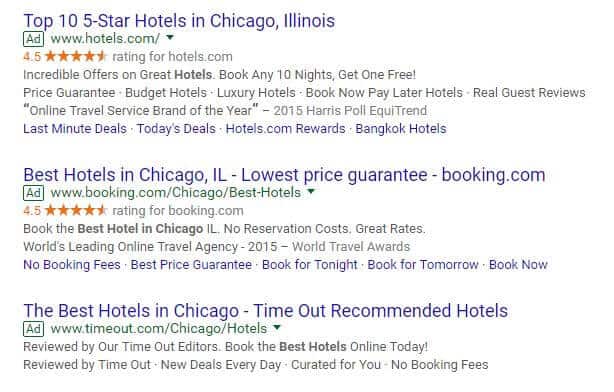11 Actionable Neuromarketing Hacks To Improve Your PPC Results
Although we all like to believe that we make purchasing decisions based on logic and rational thought, the truth is we are often swayed to a decision based on our emotions. This concept, known as neuromarketing, applies the principles of neuroscience to marketing research, studying consumers’ sensorimotor, cognitive, and affective response to marketing stimuli. In other words, it looks at how marketing interacts with our minds and speaks to our emotions with the goal of persuading consumers to take action.
PPC experts can use the available research in this field to make their pay-per-click ads more effective. Neuromarketing is not a concept that stands alone or replaces traditional ads. Instead, these principles help advertisers create more compelling ads based on consumer behaviour research. When ads create an emotional connection with a consumer, it increases the chance of a purchase.
Here are some ways to use neuromarketing principles as a PPC expert.
Imagery compared to text. We process visual images quicker than text and it is a more compelling way to share a message. Based on the below picture and text, how do you feel about petting this dog?

That’s what we thought. We react quickly and emotionally to images more so than words.
Just as your reacted differently to the above picture compared to the text, consumers will react to pictures of your offer more than a description, especially when you can present the benefit in an image.
Address pain points. The reason why some affiliate marketers are so successful. People are motivated to avoid pain especially if there is a small action they can take immediately that will relieve some of it. Tell potential customers what you will do to fix their problem.
Laughter increases endorphins and when consumers associate your humorous ad with laughter; by association, they feel good about your brand.
Simplify your pricing. Rather than leading people to a landing page with a dozen individual offers, make it easy with only a couple options. Give people a low-end option to start doing business with you.
Use framing. When you have multiple packages, use framing to highlight what they miss out on with the lower end options. They need a basis for comparison to prompt them to take advantage of an offer.
Highlights carcity. Many consumers have a fear of missing out (FOMO). If something is available in limited quantities or for only a specific time, it is perceived as more valuable. For example, does the below image look familiar?
New iPhone releases capitalize on this principle as people wait in line overnight so they do not miss out on the release. They are experiencing FOMO (Fear Of Missing Out). You can promote scarcity with your PPC ads by highlighting that stock is low with a message such as “Only 6 items remain!” or note that the “Big sale ends Friday” to urge people to make a purchase right away. You can create ads that highlight these features in AdWords by using Google Ad customisers as seen below for a shoe sale.
Include reviews. Since 83% of the population trusts friends’ opinions more than what your brand tells them, include reviews in your PPC ads. Quotes or paraphrases from third party reviews can be added as an extension in Google AdWords.
Here are a few examples of ads with paraphrased reviews:

Use images of people. But not just any people. Highlight pictures of people that represent your target audience to take advantage of the mimicry effect, which says people are drawn to people with similar verbal and nonverbal behaviour. This is another association that increases their preferences for your brand.
Make it easy.
People suffer from decision paralysis when there are too many options. As they over analyse their options, they become paralyzed and end up not taking any option. Make some of the decisions for them.
Incorporate gamification. Adding some reward, even in the form of point, helps consumers make a connection to your brand with little to no risk on their part.
Memorable headlines. With AdWords, you now have two headlines with Expanded Text Ads so alternate Headline 1 and Headline 2 to see if there is a difference in performance based on the order.
To learn more about these persuasive concepts and shortcuts that govern our behaviour, view this 11-minute clip based heavily on Dr. Robert Cialdini’s work.
Many brands already apply these principles into their marketing strategies, such as Frito-Lay and and Campbell’s soup.
Frito-Lay discovered that using the word “guilt”, as in “guilt-free snacking” was not a good description for female customers, seemingly because “guilt” brings a negative image to mind. Instead, with the word “healthy”, they decided to present the same concept of eating the right foods, but in a positive light of being healthy rather than avoiding guilt. Their strategy included changing the outer packaging of their chips to appeal to the health-conscious consumer. PPC experts can test this type of hypothesis with Display Ads both with the images used and with that slight change in wording. How do people respond to “guilt-free” snacking compared to “healthy” snacking? An experiment in AdWords will help answer that question.
Campbell’s soup is a name associated with comfort food for a cold day and the go-to food for recovering from a cold. But is soup really good food? Campbell’s modified their advertising strategy to appeal to consumers’ emotions rather than the nutritional value of their soup. They discovered that adding steam to the image on the label and removing the spoon was more emotionally engaging that their old label based on their studies.
Neuromarketing is an emerging field for PPC experts and provides valuable insights on what truly drives consumer decisions. But note that if you use it in your PPC efforts, you still want to deliver on what you promise. Although advertisers may use manipulation techniques to get that first time purchase, customers catch on to bait-and-switch type offers and that initial sale will not convert them to a loyal customer with recurring sales.
Since neuromarketing is backed by research and here to stay, PPC experts should become familiar with it and use it to support their overall brand strategy. But remember we all have unique brands and no one size fits all with neuromarketing principles. Some of the things may not work for your brand so be willing to test these principles. And if are interested in learning more about persuasive techniques and missed the video mentioned above, take a few minutes to review it before putting these things into practice.
